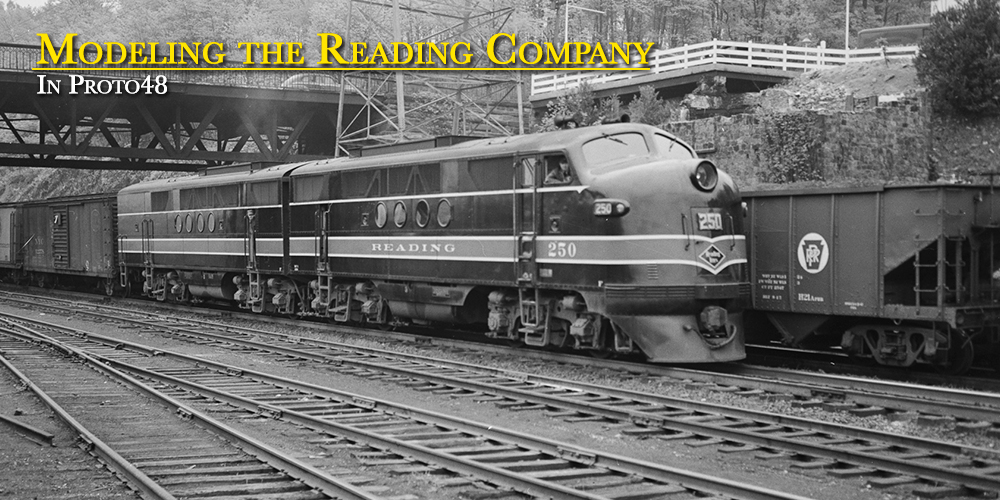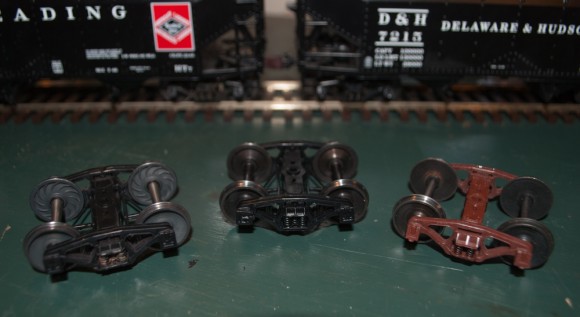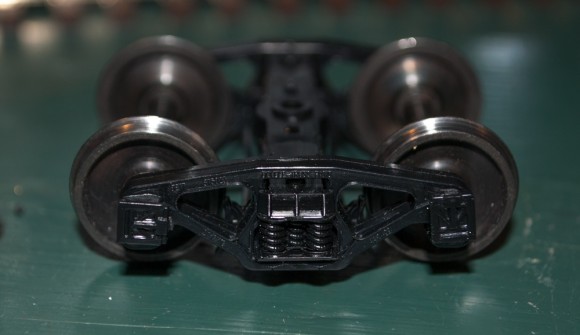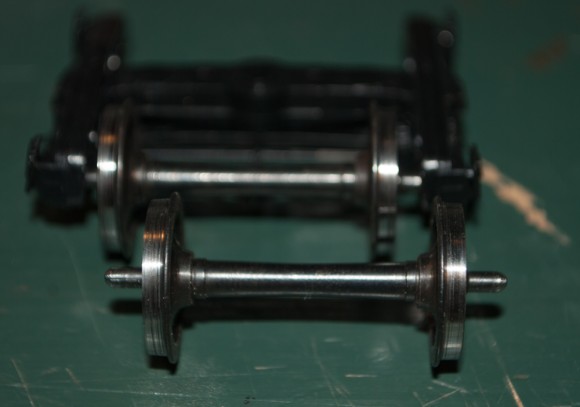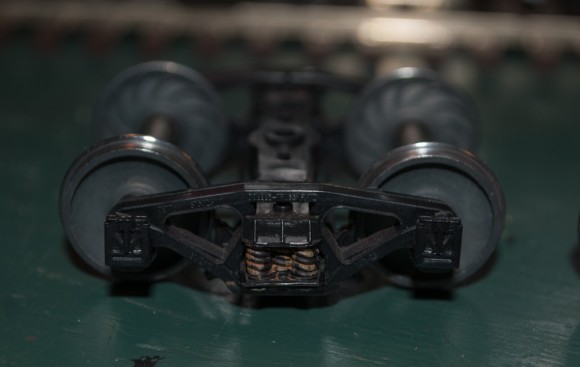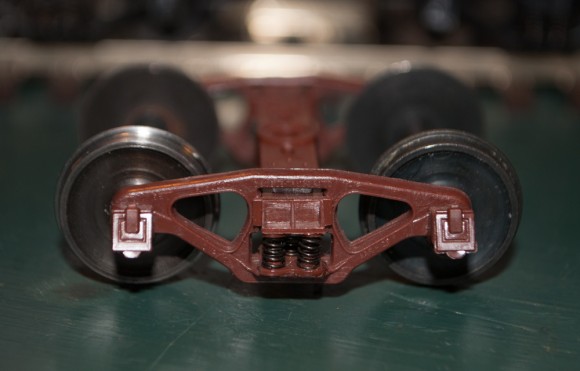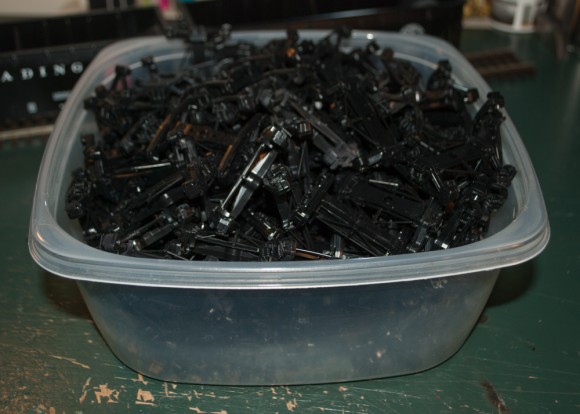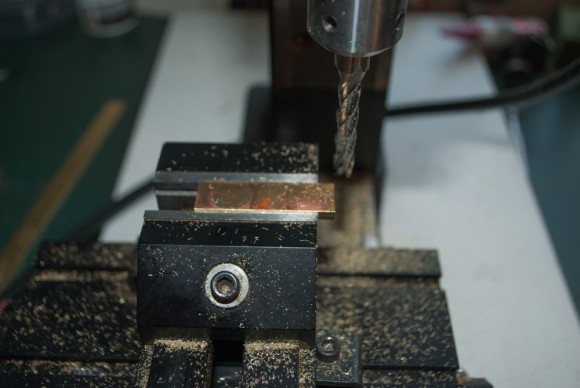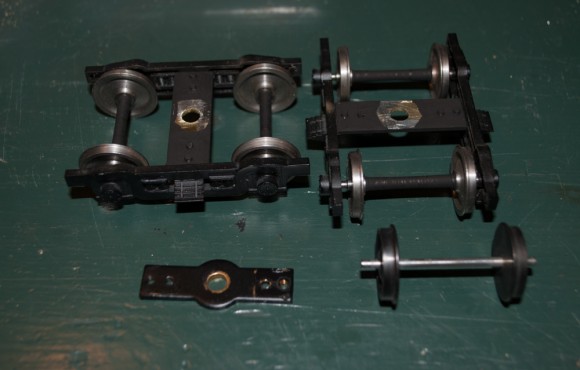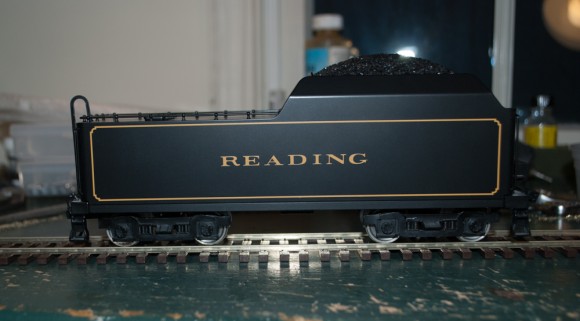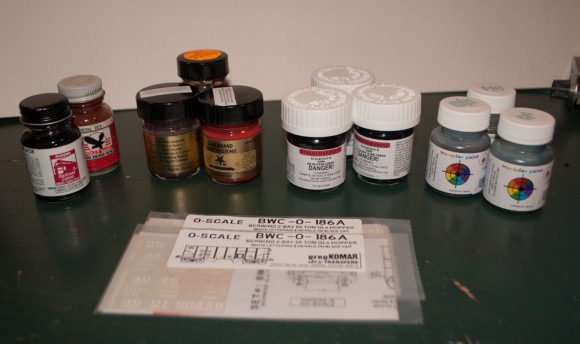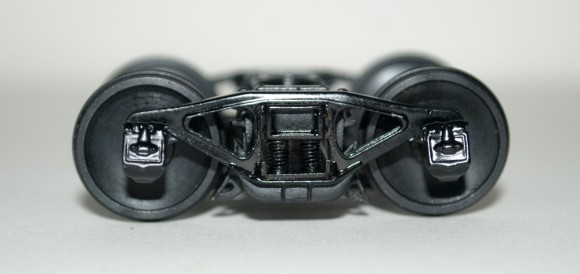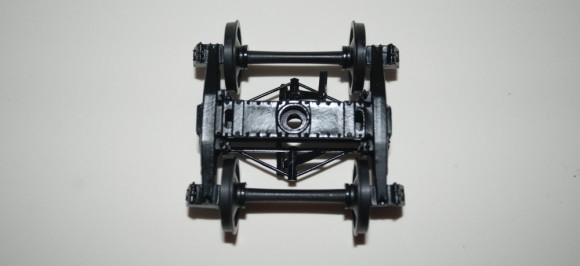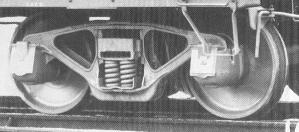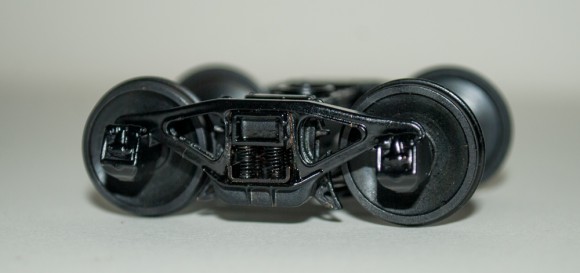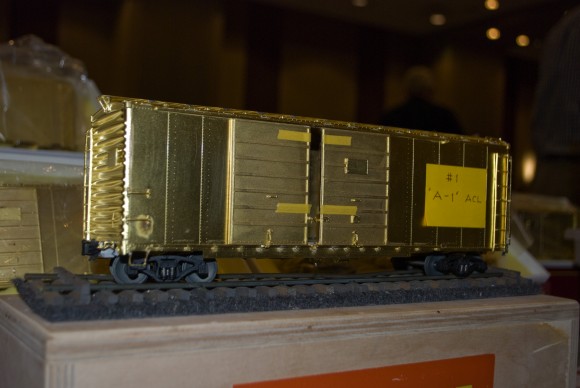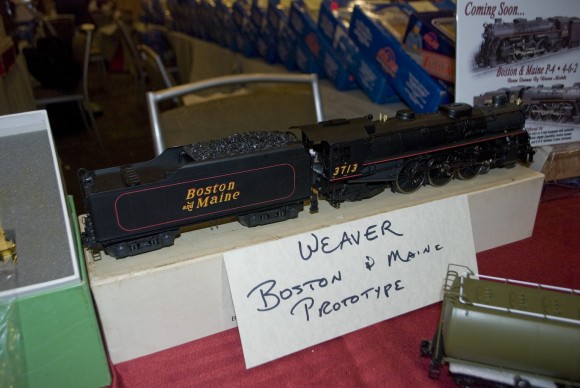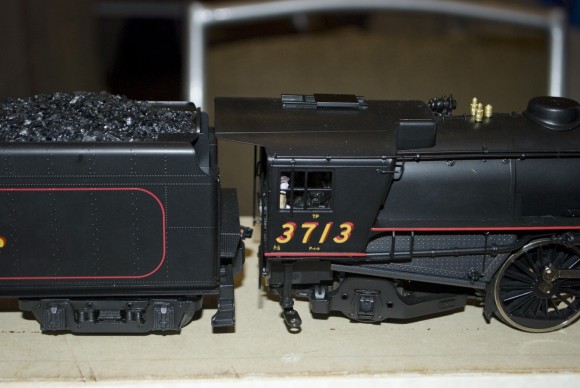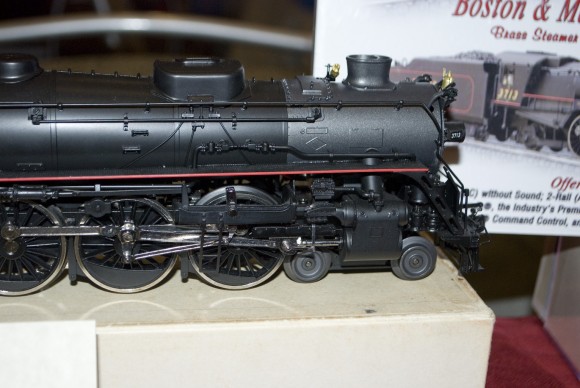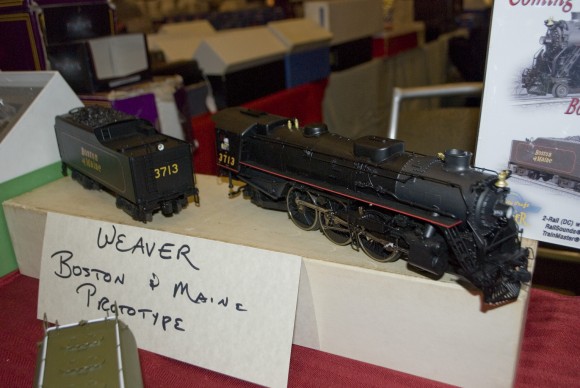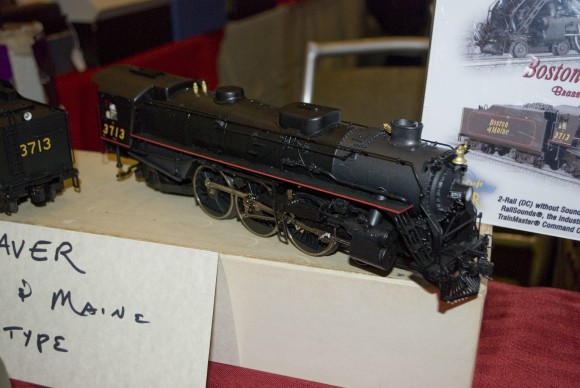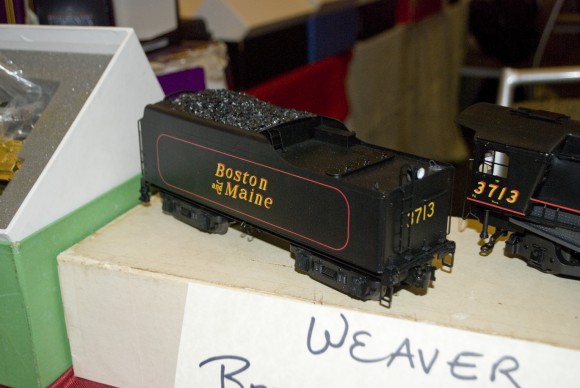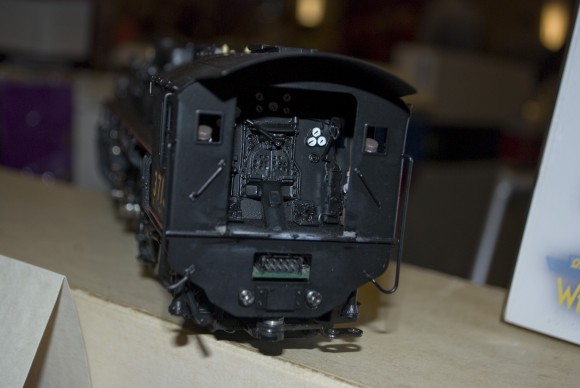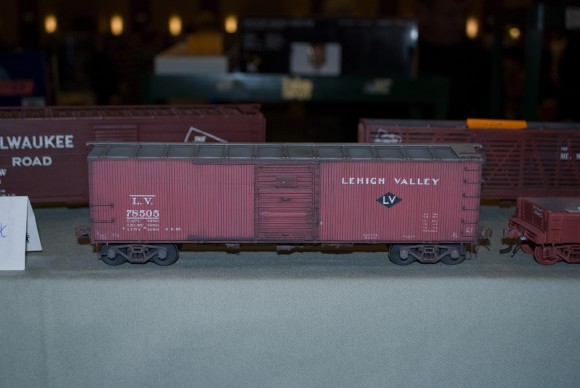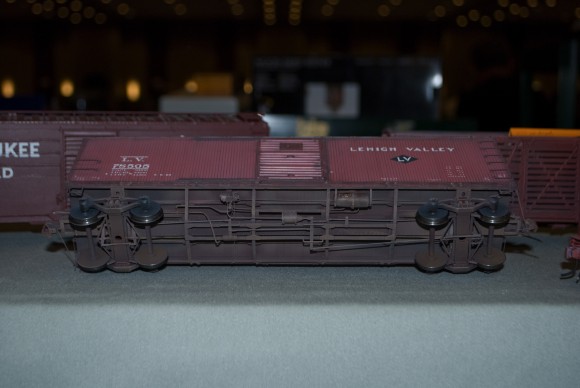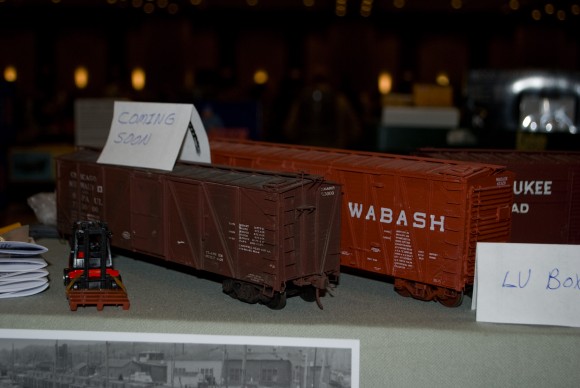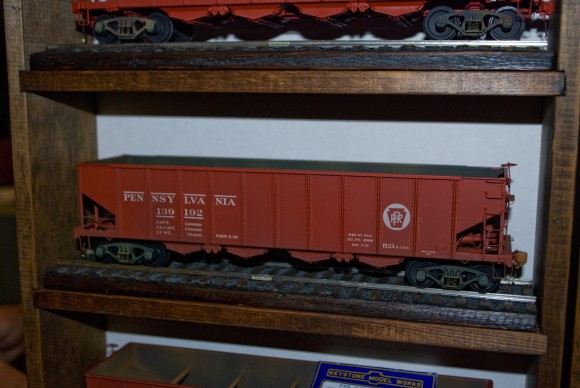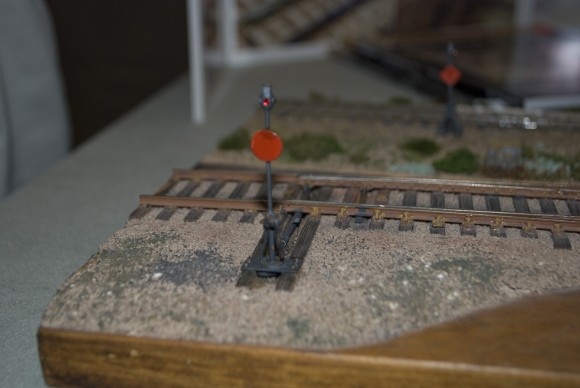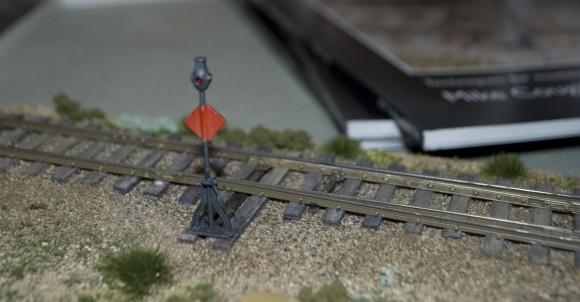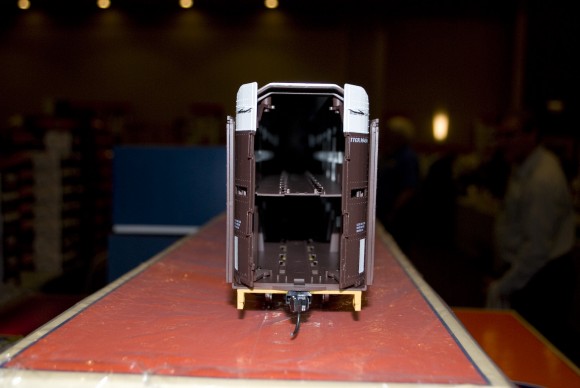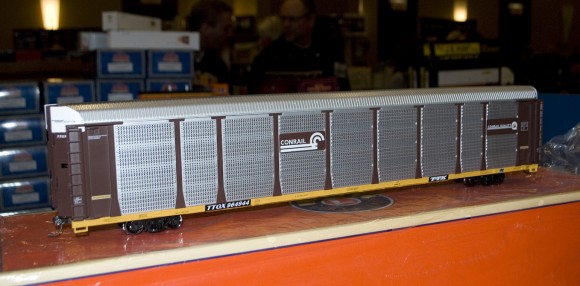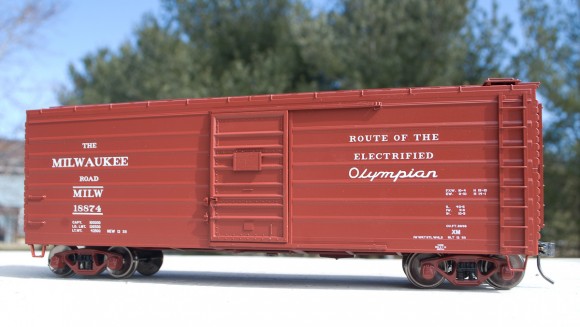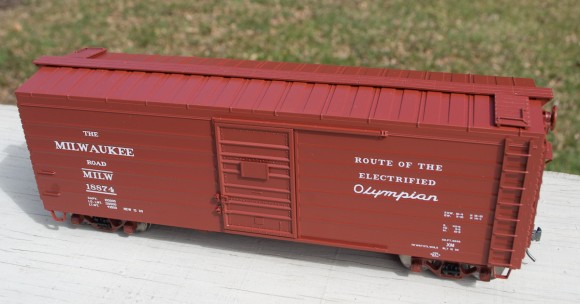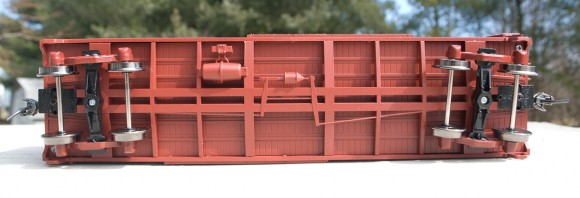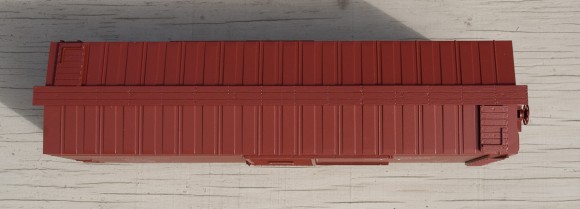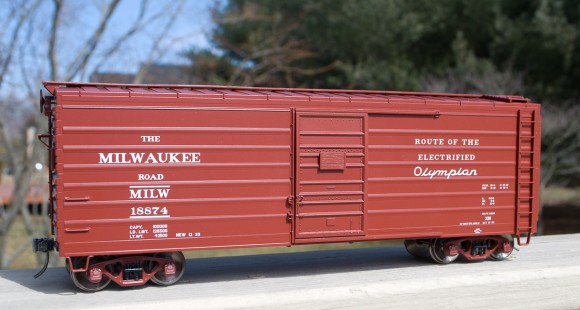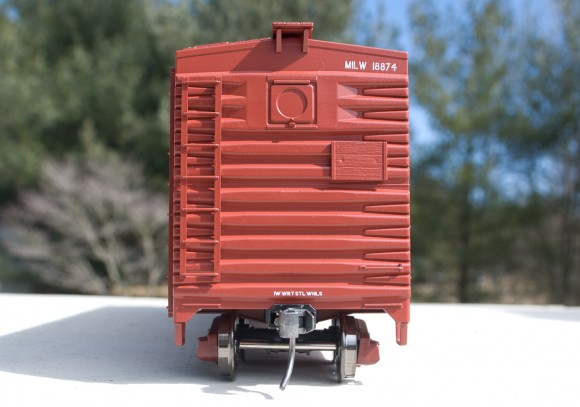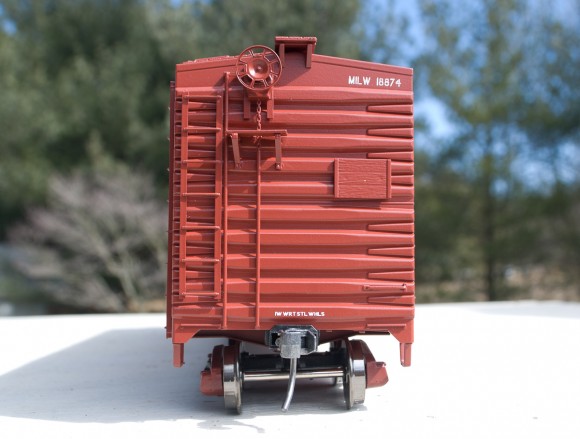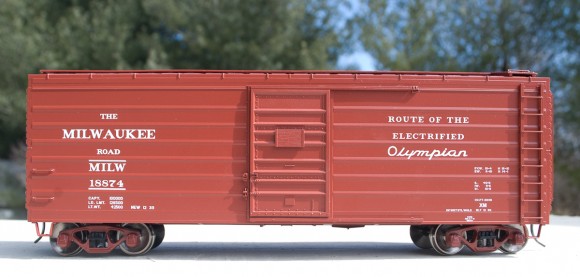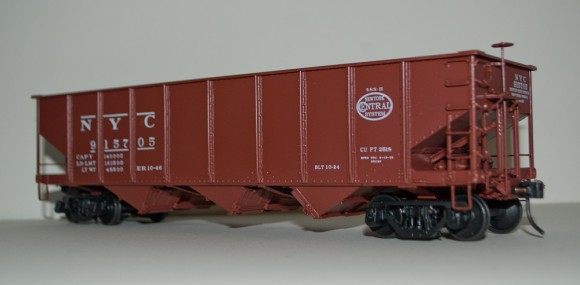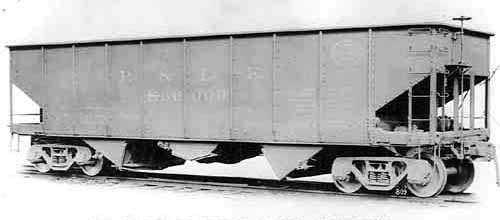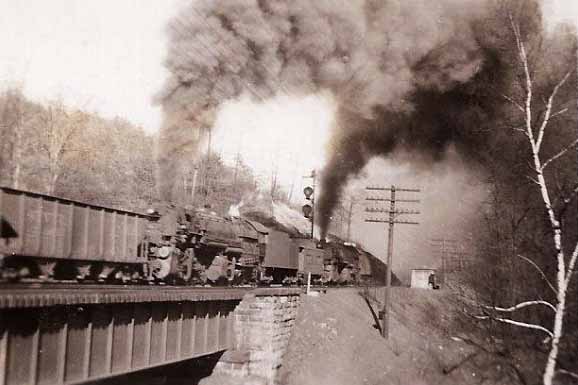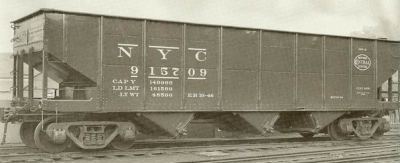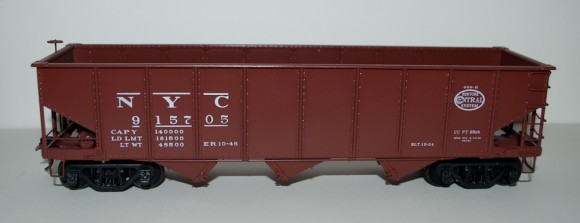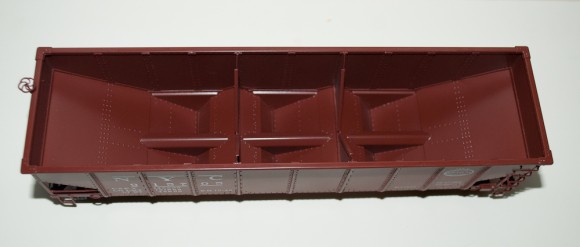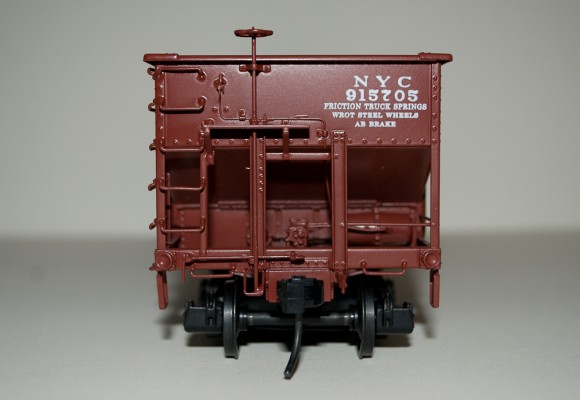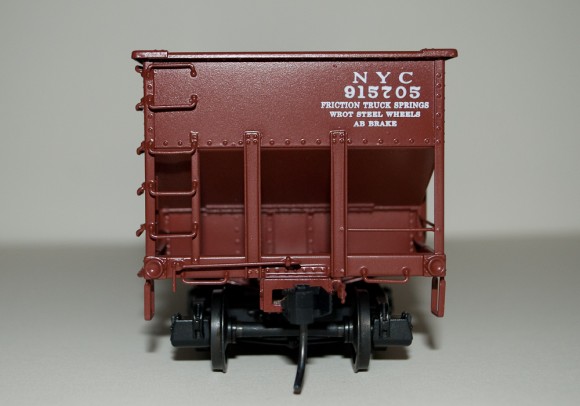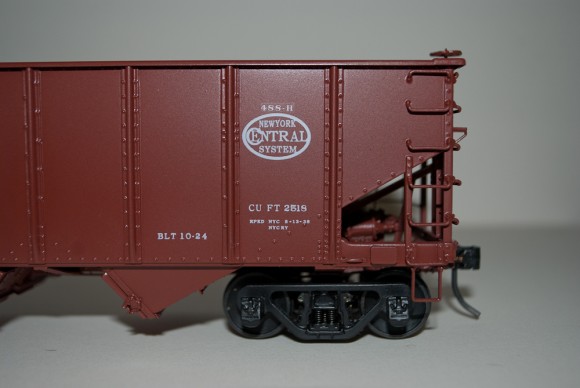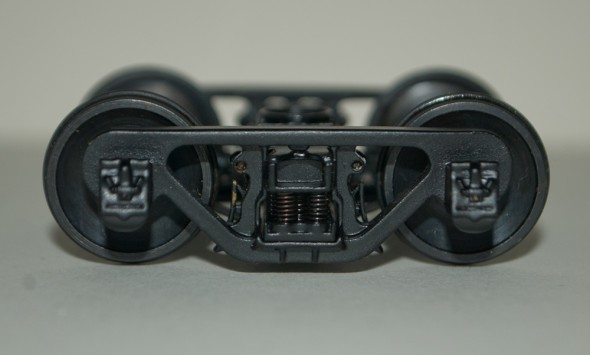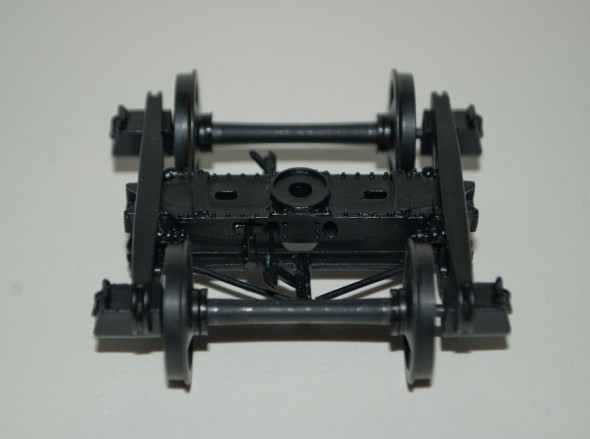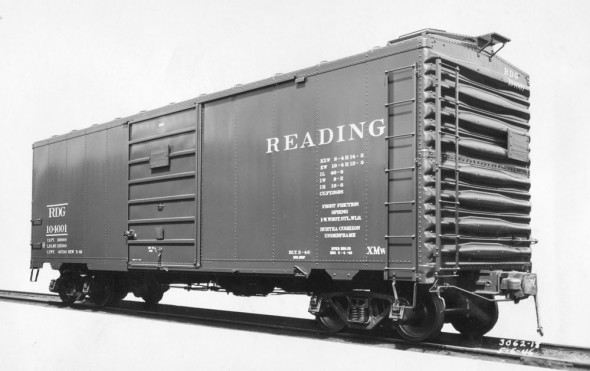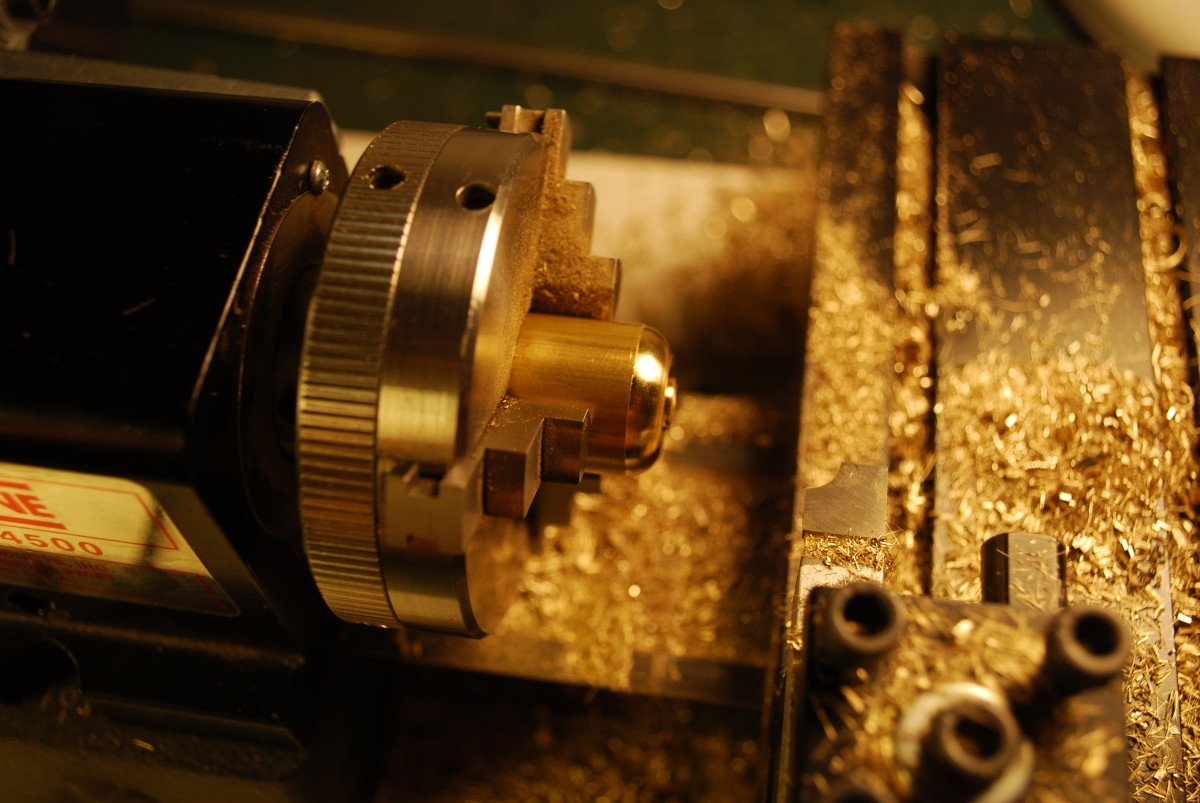
In my last post “What is Proto48?” I made the following comment:
My modeling belief has always been that no mater what width the gauge, the model should be detailed as accurately as time, prototype information, modeling skills and money permits.
We can all see the improvement of our modeling skills just by looking at some of our old models. While looking at your earlier models can be a nice trip down memory lane, now that the models are to be placed on the layout together with your newer work, some of the warts on the older models might start to show.
I conducted an experiment one night at the club, I placed eight cars in a train. Five of the cars had full brake detail and separate grabs, one car had no brake detail and molded on grabs, the other two were older USH hoppers with their end exposing that they only had the three brake appliances with no piping between them. They were all nicely painted and weathered. I ran them on the layout for a while, everybody who saw the train run thought all the cars were super-detailed. So what does this mean? Most people don’t look carefully enough? Does it mean we don’t need to model these features? It means you need to model to the level that makes you happy and not worry if it’s up to someone else’s standards.
Realize these are my standards that I’m shooting for, not anybody else’s, just mine. Not a Proto48 standard, just a George Standard. For new models, it will set the bench mark for the level of accuracy and detail required. For the older ones, some upgrades might be in order. Of coarse this is a changing list as new products development can bring new levels of detail or realism.
Here is what I have so far:
- Prototype of model included in my January 1952 ORER
- Painted as the car would have looked in the Summer of 1952
- Weathering applied to car for the Summer of 1952
- Models to be detailed for the Summer of 1952
- Reweigh Dates to comply with Rule 11 AAR Code of Car Service Rules
- Brake Equipment and Rigging
- Wheels and trucks to comply with NMRA Proto48 specs
- Polished tire treads
- Weight standards
- Kadee couplers, correct height, without trip pins
Prototype of model included in my January 1952 ORER
My modeling is set in the Summer of 1952. I arrived at this date because of a couple of reasons. First the major classes of Steam locomotives I wanted to model, K1, N1 and T-1’s were all still running at this time. Also, this was the last Summer that the Reading G-3’s ran on passenger trains in Pennsylvania. At a point in the early Fall they were all shipped over to the PRSL in South Jersey to finish out their service lives. They were replaced with the new GP-7’s that arrived that Summer. Since I acquired a nice SGL G-3 in my trades of surplus PRR models, I’d like to see it pulling my passenger trains.
Painted as the car would have looked in the Summer of 1952
Rather self explanatory but it has meant the selling of some finished models which were painted in paint schemes from 1954. I know I could have stripped the cars and repainted, but it has been easier to sell off the finished cars and buy new unpainted cars. Besides I hate stripping paint off cars.
Weathering applied to car for 1952
Again, a simple idea but think if a car was built in 1952, it’s going to be very clean. Most often we weather the cars too heavy because that’s how we remember them last in the 70’s ready for scrap. On locomotives, the AS-16’s are less than a year old and the DB equipped AS-16’s started arriving in June 1952, they are less than a moth old.
Models to be detailed for 1952
These types of dated details weather they are paint details or appliance details for the equipment help set the time period. Some examples are, the safety grabs on the noses of the EMD F-units. They were changing throughout the 1950’s. They went from not there at first to some there and painted black, more applied and painted yellow.
Reweigh Dates to comply with Rule 11 AAR Code of Car Service Rules
These can be found in the ORER’s. I’ve been modeling these since before my club days. They govern how often a cars light weight had to be weighed. Tony Thompson wrote an article in the April 2011 issue of Railroad Model Craftsman (RMC) which he talks about on his blog. He explains the rules well in the article.
Since my modeling efforts prior to this had been set in 1956, this has required the changing of almost all the reweigh dates on my cars.
Brake Equipment and Rigging
With my first models, I was happy just to have something under the car. The major appliances were enough. Then I saw what could be done. Full brake piping with equipment positioned as per the prototype. It really does not take too long to build and really sets off the models.
Wheels and Trucks to comply with NMRA Proto48 specs
Good running equipment is the difference between having fun operating on the layout or having to force yourself to work on the layout. Good running equipment requires that all specifications for wheels and track are within the NMRA standards.
Polished Tire Treads
I always liked the look when I saw other modelers do this. Once I did this to a few of the trucks, I wanted to do this to all of them. I’m not sure if I will have any issue of the treads rusting in the South Jersey humidity. If they start then maybe they just need to be rolled on the layout more.
Weight Standards
I’ve always thought the NMRA weight standards were a little on the heavy side. Since I’m running some very heavy diecast hoppers. I can’t have the cars too underweight and still expect them to operate without trouble.
Kadee Couplers, Correct Height, Without Trip Pins
The Kadee 700 series couplers are my standard. Most of my models are equipped with the older version with the spring on the outside. A little paint and the spring disappears. When I work on an existing car, I am changing them out for the new couplers. I’ve tried Protocraft couplers, they are beautiful and work nicely. They just aren’t for me.
Air Hoses
Air Hoses are on the standards list since all the prototype cars had them and not all the models that have been made over the years have had them.
I tried the magnetic working air hoses that Ben Brown wrote an article about in the Jan/Feb 20009 issue of O Scale Trains explaining how he made working air hoses. I got the air lines to work but I found it to just be an extra point of frustration. They are nice when they work.
All that being said, these are MY standards. They are not meant to be anybody else’s standards. Nor are anybody else’s standards meant to be mine. We are all supposed to be having fun after all.
